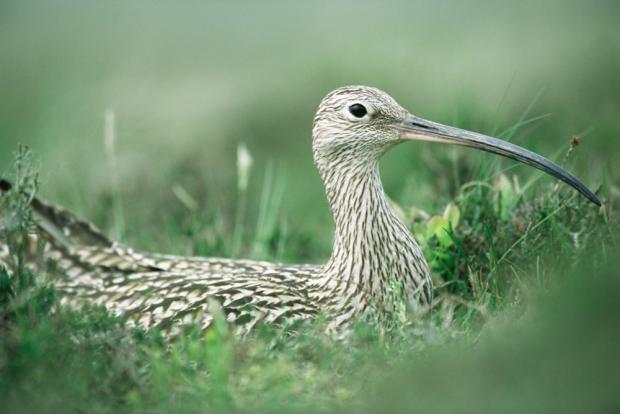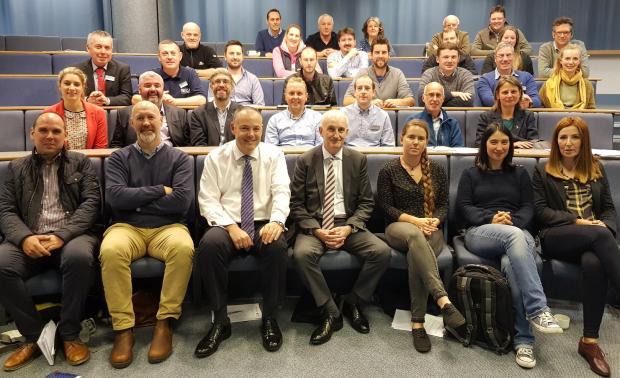Highest level of conservation concern

Eurasian Curlew (Numenius arquata) or simply Curlew has a distinctive bubbling call which you may have heard while walking over moorland or on a coastal marsh. It is the largest wader in its range. It has a mottled greyish-brown plumage and a white rump which is most noticeable in flight. It is easily identified by its long greyish-blue legs and long downturned curved bill. They breed in a number of habitats, including moorland, open boggy areas and traditionally-manged hayfields. After breeding, they migrate to coastal areas of sand and mudflats. Curlew is listed on the Northern Ireland Priority Species List as a species of principal importance for the purpose of conserving biodiversity.

In the afternoon, in two workshop sessions, attendees were asked to contribute the development of a new Species Action Plan (SAP) for Curlew. Recent evidence has shown that these can make a difference to the conservation of threatened bird species.
Workshop agenda, report and presentations
- Agenda of the Northern Ireland Curlew Workshop
- NI Curlew workshop - outcomes and recommendations report
‘Setting the scene locally’
- Status of Curlew in Northern Ireland: Kendrew Colhoun (RSPB)
- Northern Ireland Lowland Breeding Wader Survey: Katherine Booth-Jones (BTO)
- Habitat Management for Breeding Waders within a DAERA agri-environment scheme: Alan Morrow (DAERA)
- Lowland Reserve Management for Breeding Curlew in Fermanagh: Brad Robson (RSPB)
‘Wider Curlew conservation’
- Curlew Action in Republic of Ireland: Alan Lauder
- UK and International Curlew Action: Sarah Sanders (UK Curlew Recovery Programme Manager, RSPB)
- Curlew Conservation Action in Wales: Patrick Lindley (Natural Resources Wales)
- Identifying problems and testing solutions: James Pearce-Higgins (Director of Science, BTO)
